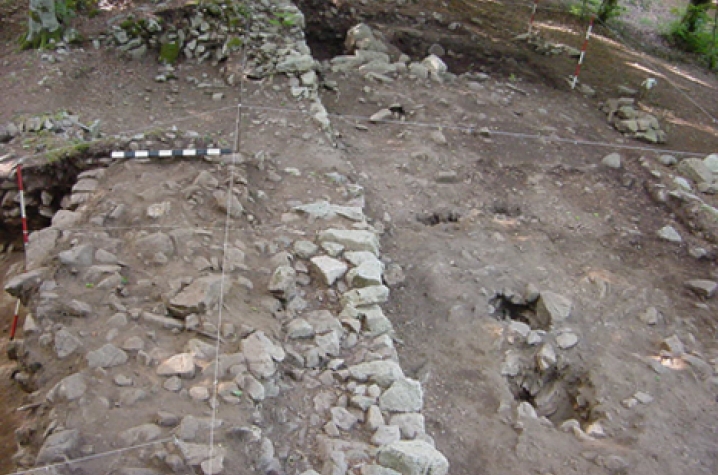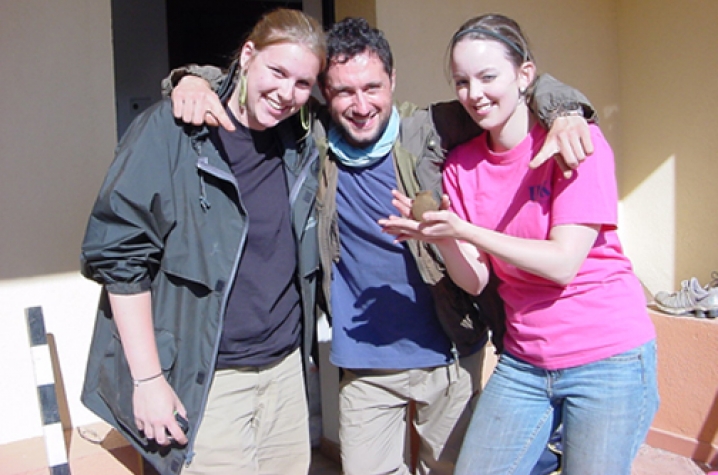UK Professor's Specialty Earns Fellowship
LEXINGTON, Ky. (Oct. 12, 2010) − Paolo Visonà, adjunct associate professor of art history at the University of Kentucky Department of Art, was recently awarded a Margo Tytus Visiting Fellowship by the University of Cincinnati Department of Classics for his scholarly research on the coinage of ancient Carthage.
“We are pleased to see that Paolo Visonà’s work is recognized through the Tytus Fellowship. This reflects not only the importance of his findings but also his work to create an interdisciplinary team to study the site. We are very proud of his association with the Department of Art,” says Benjamin C. Withers, chair of the Department of Art.
Visonà, a numismatist and a Mediterranean archaeologist, accepted the fellowship to work on a monograph to be titled "Carthaginian Bronze Coinage." His monograph is a major study and catalogue of the bronze coins minted by the city of Carthage between the fourth and second centuries B.C.
"This is one of the largest coinages that circulated in the central and western Mediterranean before the Roman conquest, and I've been studying it in detail for the last 25 years," said Visonà. "Since I was a graduate student at the University of Michigan, I have being assembling data on these coins from over two hundred museum collections worldwide." In addition to several essays on Carthaginian coinage, Visonà has published three reports on the coins found in the American excavations at Carthage, most recently in 2009.
The Tytus Fellowship will run from March 28 to June 5, 2011.
Visonà is also known for his archaeological work at the Greek fort on the summit of Monte Palazzi, located in the Calabria region of southern Italy. The UK excavations, led by Visonà, represent the first large-scale archaeological project at this site since 1961.
Deeply involved in the Monte Palazzi excavations, Visonà has visited the site four times in the past five years. He conducted preliminary research at the site in 2005, and again in 2007, when he found a bronze coin of Locri, fragments of miniature vessels, a terracotta draped figurine, bronze arrowheads and fragmentary roof tiles. Visonà also uncovered part of the fort's northeastern wall, and excavated two shallow pits containing burnt organic remains of cereals and olives, which he believes to be linked to the cult of Greek chthonic or fertility deities, such as Persephone.
In 2008, after he returned to the site, he located the fort's southeast defensive wall and found more miniature vessels, a javelin point, an elaborate bronze implement believed to be a household object, and two bronze coins of Syracuse. Visonà offered UK students the opportunity to participate in the 2008 excavations by teaching a 4-week, 6-credit course centered around the dig.
This summer, with support from the UK College of Arts and Sciences and the UK College of Fine Arts, Visonà directed UK's most recent investigations of the fort. His team finished uncovering a segment of the southeast perimeter wall and found 65 kg of pottery, some of which with graffiti, including numerous fragments of fineware cups datable to the late sixth and early fifth centuries B.C.
"This is the earliest pottery found at the site," noted Visonà, "And it indicates that the Greeks arrived at Monte Palazzi around 500 B.C."
Other finds consist of three coins of Syracuse and Locri, another javelin point, and several stone utensils. According to Visonà, the most important project carried out this summer was a geophysical survey of the site, which was conducted by George Crothers, an associate professor at the UK Department of Anthropology. "The survey gave us a good idea of the general plan of the fort, which looks like a trapeze and may have covered an area of possibly 1,400 square meters," added Visonà. "We now know that the main entrance to the fort was on the southern side, and that the fort has interior walls."
In May, Visonà and the Kentucky Society of the Archaeological Institute of America were awarded a "Society Outreach Grant" for a bilingual exhibition of the UK excavations at Monte Palazzi to be opened at the Lexington Public Library - Central Library in late March, 2011. The exhibit will eventually travel to southern Italy, where it will be installed permanently near the archaeological site.
Visonà is also an officer of the Kentucky Society of the Archaeological Institute of America, a member of the American Numismatic Society, and a fellow of the Royal Numismatic Society. In 1999, he co-authored "Oppido Mamertina: Ricerche Archeologiche nel Territorio e in Contrada Mella," a report volume on the archaeological excavations he directed between 1987 and 2001 at Contrada Mella, a Hellenistic site in Calabria. Visonà earned his doctoral degree in classical art and archaeology from the University of Michigan.








